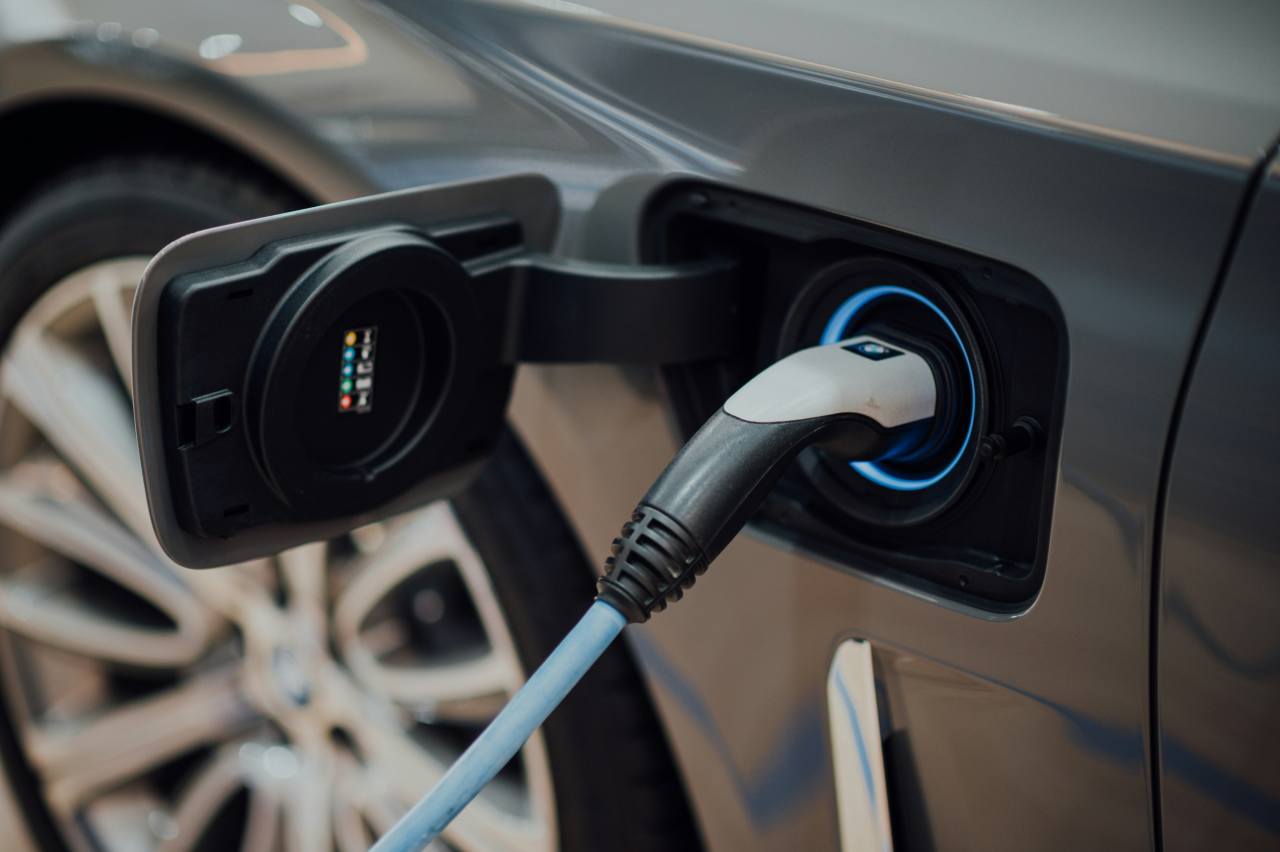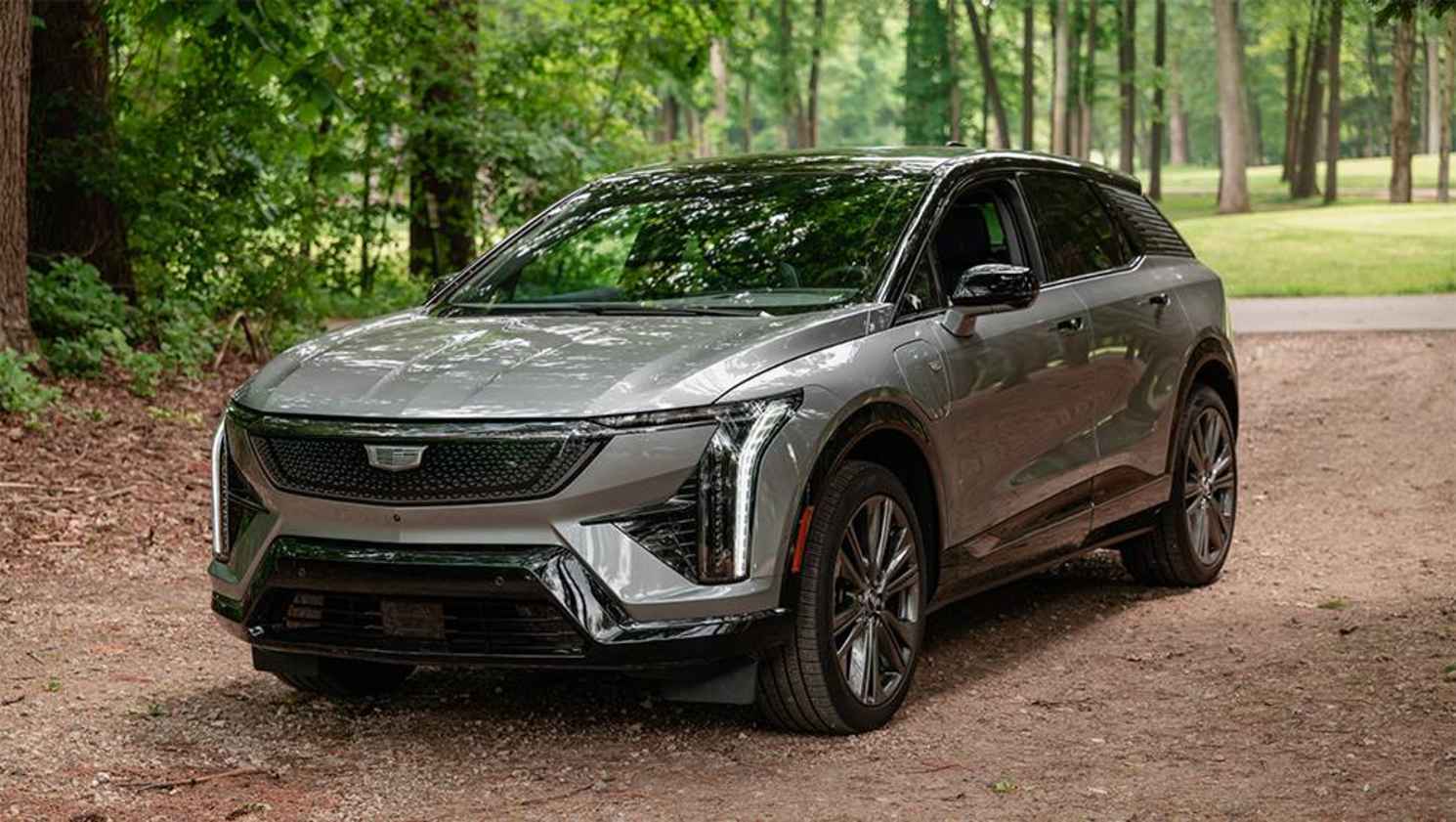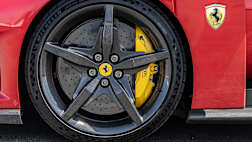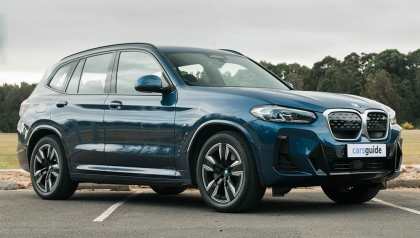If Goldilocks was looking for a getaway vehicle, and if the three bears weren’t particularly fast runners, she’d be pretty well set with the new Cadillac Optiq, which will sit prettily at the bottom of the brand’s three-car EV range in Australia when it goes on sale later this year.
Parked next to the slightly larger and Lexus-looky-likey Lyriq, it can be hard to tell the difference if you approach them straight on from the rear, but there’s something about the Optiq’s lines and looks from any other angle that makes it feel like a more complete, resolved and attractive piece of design.
One particularly eye-catching touch is the rear quarter panel window, which features a “Cadillac-first precision pattern in acoustic laminate glass”, which aligns with Cadillac’s Mondrian crest in a nod to classic Cadillac styling.
Placed next to the noticeably bigger Cadillac Vistiq - a three-row, six-seat large SUV - the family resemblance is even more obvious. But again, the Optiq has a just-rightness to it; not too big, not too small and not too awkward looking.
Surprisingly, the Optiq also has the most impressive interior of the three cars, with textures and touches that, for the most part, feel more premium than even the more expensive range-topping Vistiq.
One particular model we drove at the global launch in Michigan, USA, had a lovely light-blue interior package that combined quality fabric sections - which, unlike many versions of this new interior trend, felt pleasant to the touch despite being made of 100 per cent recycled materials - with layers of leather and something called 'PaperWood veneer'.
This attractive material is made up of equal parts tulip wood and recycled newspaper. No longer will newspapers be mocked as fish and chip wrappers, or something to put under the budgie cage.
Everything you look at in the Optiq’s interior, and most things you touch, feels expensive and thoughtfully chosen. This falls down in just one area, a kind of rough-fluff lining for the door bins and the bottom tray of the centre console, which feels a bit like old teddy bear.
The prominent central cupholder also looks a little like one of those old ashtray stands your grandfather might have employed.
The seats are comfortable and supportive, front and rear, and the back ones are made to feel more spacious by the full glass roof, while Cadillac claims the Optiq offers “segment best second-row leg room” (segments in the US are, of course, very large in general).

Speaking of largeness, the Optiq will also arrive with a whopping central touchscreen, measuring 33 inches diagonally, and presenting an advanced LED display that can project “over 1 billion colours”.
I wish I’d found out about this while I was driving the car, because I’m fairly sure my eyes have never encountered one billion colours before. Impressive barely covers it.

Overall the goal of the designers was for Optiq to bring a sporty and youthful persona to Cadillac’s EV portfolio, which I found just a little strange. I’d describe the Optiq - giant screen aside - as being as familiar and comfortable as your grandpa’s slippers, or Ugg boots, and in that way it has a kind of Lexus-level of familiar, comfortable prestige.
In driving terms, the Optiq once again presents as the just-right option in the Cadillac range and could well appeal to those slightly confused buyers who are seeking an EV, mainly because their children and grand children tell them it’s the right thing to do for the planet, but don’t really want to buy one.

With its adequate rather than exciting 224kW and 480Nm - produced from an 85kWh battery and two motors, one on each axle for all-wheel-drive SUV-ness - the Optiq never feels as threatening or alarming in its acceleration as other EVs do.
Throw in the fact that it comes with a fake-noise generator that genuinely makes it sound like you’re driving a real, old-school, petrol-burning machine and, again, there’s a sense of friendly familiarity about the Optiq.

That’s not to say it’s a slug, of course, but in modern terms its 0-100km/h time of five seconds is very much medium pace in a world of bowling-you-over-fast electric vehicles. The claimed range of 486km between charges is also sitting in the medium offering section, sadly.
Fortunately, thanks to its pleasantly un-American size - by which I mean it’s not stupidly big - the Cadillac Optiq also manages to ride and handle quite well. And while it doesn’t take too much effort, or stupidity, to get the tyres squealing if you hurl it at a series of bends, it’s capable of acquitting itself well enough on a winding bit of road.

It’s also worth noting how quiet and smooth the cabin felt, despite out test drive taking in some truly nasty, and noisy, broken concrete roads outside Detroit.
The challenge the Optiq will face when it arrives in Australia early in 2026 (or sooner if Cadillac can swing it) is that it’s going to be up against a lot of established players, many of whom already have brand recognition, and perceived value, in this market. And some of which, like the many, many Chinese brands offering EVs, are going to be much cheaper.
Price will obviously be important and Cadillac is yet to confirm what it thinks it can get away with charging for the Optiq in Australia. It would seem wise, indeed almost necessary, for the brand to get the Optiq on sale under the LCT (Luxury Car Tax) threshold for fuel-efficient vehicles, which is currently $91,387.

Such a move would make it far more attractive to Australian buyers, of course, but don’t be surprised if it actually comes in closer to $100,000.
We, along with Goldilocks, will just have to wait and see.
Note: CarsGuide attended this event as a guest of the manufacturer, with travel, accommodation and meals provided.
Cadillac Optiq 2026:
| Engine Type | |
|---|---|
| Fuel Type | |
| Fuel Efficiency | |
| Seating | 0 |
| Price From | $0 |










.jpg)

.jpg)
.jpg)


.jpg)
